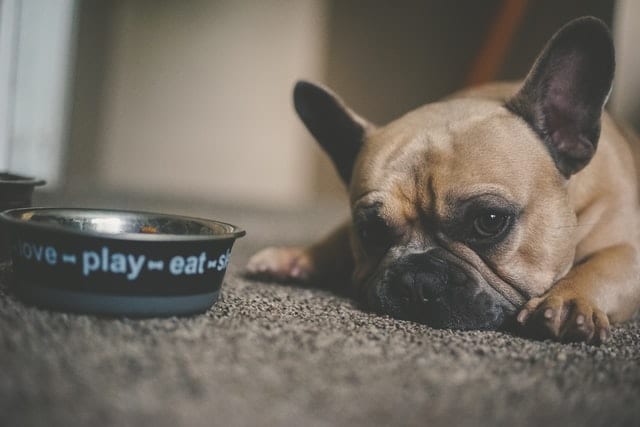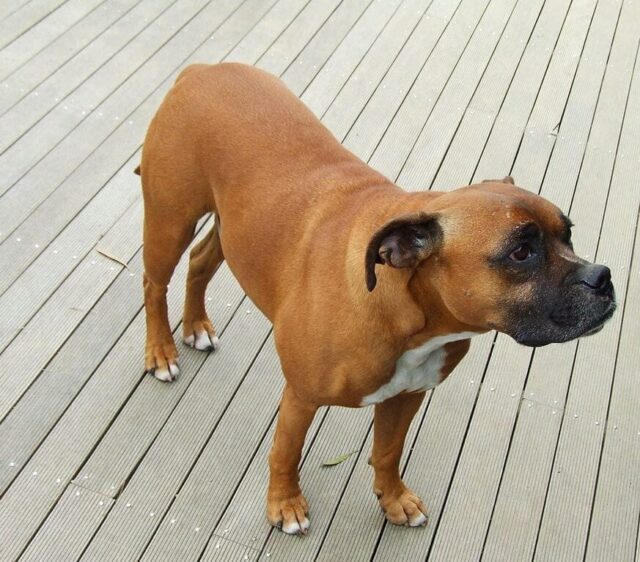Seeing your dog in pain is something every dog parent dreads! Whether from a fresh injury or the pain of aging, knowing a dog hurts tears at the heart and sends us running to make an appointment with the vet. We want nothing more than to help them and assure them its going to get better.
But it’s also important to remember dogs are tough. They don’t always cry out to us when in need.
Dogs aren’t humans, so we don’t speak the same language and sometimes we miss things because of the difference in the way we communicate. The best thing we can do to keep dogs happy and comfortable is to learn their language.
One of the first lessons to learn in canine speak deals with the subtle ways in which dogs display their pain with certain actions and behaviors. Don’t worry if you’re new to dog language and not quite sure how dogs show pain.
Not everyone is a canine behavioral expert, but learning these 5 signs your dog is in pain will help you speak canine a little easier.
Signs Your Dog is in Pain
#1 – Excessive Grooming
It’s normal for dogs to lick and groom themselves, but it’s not normal for this to become an obsessive behavior. If you notice your pet tending to a localized area he’s never noticed before, or has just recently started spending a lot more time grooming this new spot, it could be a sign that he’s hurting. As excessive grooming is one of the top signs a dog is in pain, canines, as well as other animals, will often groom places near the source of pain in hopes to clean and care for the wound, even if there is no open wound present. Be sure to keep an eye on the tender area and inspect it gently.
#2 – Heavy Panting

Panting is normal behavior that shouldn’t surprise any dog owner. Even when the panting is heavy, certain circumstances allow for it such as extra hot days and strenuous exercise. But if you notice heavy panting out of nowhere, it could be stress-induced and a sign your dog is in pain. For whatever reason it may be, unexplained heavy panting or any other unusual behavior should result in a trip to your veterinarian.
#3 – Inappetence

Lack of appetite is often the result of some sort of discomfort and often one of the top signs of pain in dogs. But it makes sense. You don’t feel like eating when you’re not well, do you? Our dogs don’t either. When not well, our pups simply don’t feel like eating, especially when it’s painful to walk all the way over to the food bowl. If you notice any sort of inappetence in your pet, it’s important to seek veterinary attention right away, as this could be a symptom of many dangerous ailments.
Related: A Comprehensive New Puppy Checklist for First-Time Pet Owners
#4 – Shyness & Aggression

If your dogs has hidden aches and hurts, you may notice him starting to become more and more antisocial. He may stop running to the door to greet everyone and avoids the petting he once loved so much. You might notice that your little one doesn’t want you picking her up anymore, or cries and yelps when you do. If this happens suddenly, it’s reasonable to suspect pain as a probable cause. In some cases, you’ll find your normally overly-friendly companion has become aggressive. This switch in personality is a common sign of pain in dogs.

If you notice your pup is hiding away and avoiding attention, look him over for painful spots. If your dog won’t let you check, then its best you let their veterinarian take a look. It’s very important you don’t take it personally if your dog does growl or snap at you. This is an example of the differences in human and canine communication. Dogs aren’t necessarily trying to hurt anyone. Growling and snapping are easy ways to tell someone it hurts and they don’t want to be touched.
#5 – General Behavior Changes

Besides shyness and aggression, you might notice that your pup doesn’t want to walk up stairs anymore or perhaps avoids jumping and climbing. Maybe he doesn’t want to chase after his beloved tennis ball lately. These are the more subtle signs of how dogs show pain.
There are the obvious signs such as limping, but it’s important to also watch out for stiffness or arched backs. Dogs in pain often lay only flat on their sides, rather than curled up in their beds. They might be slower moving, sleeping a lot more and seemingly disinterested in things they used to love.
Another sign is unexplained accidents in the house. It’s often very painful to get up from lying down (which you might notice too when getting out of bed), and sometimes dogs in pain just aren’t able to make it outside fast enough. Sometimes the squatting to go hurts, and you’ll notice your good girl will start leaving messes in her bed. All of these things can be attributed to pain – often in our older dogs, but sometimes in our younger ones as well.

Being able to identify early signs of pain in dogs can lead to a much more comfortable outcome for both you and your pup. With early veterinary care, you can often start treatment before the condition worsens, regardless of cause. If old age is the culprit, you’ll be more aware and educated on keeping your loved one comfortable and happy through his latter years. By keeping our dogs happy, we keep ourselves happy too. And there’s nothing more important than sharing a peaceful, lighthearted life with our best friends.

 Toledo, United States.
Toledo, United States.
